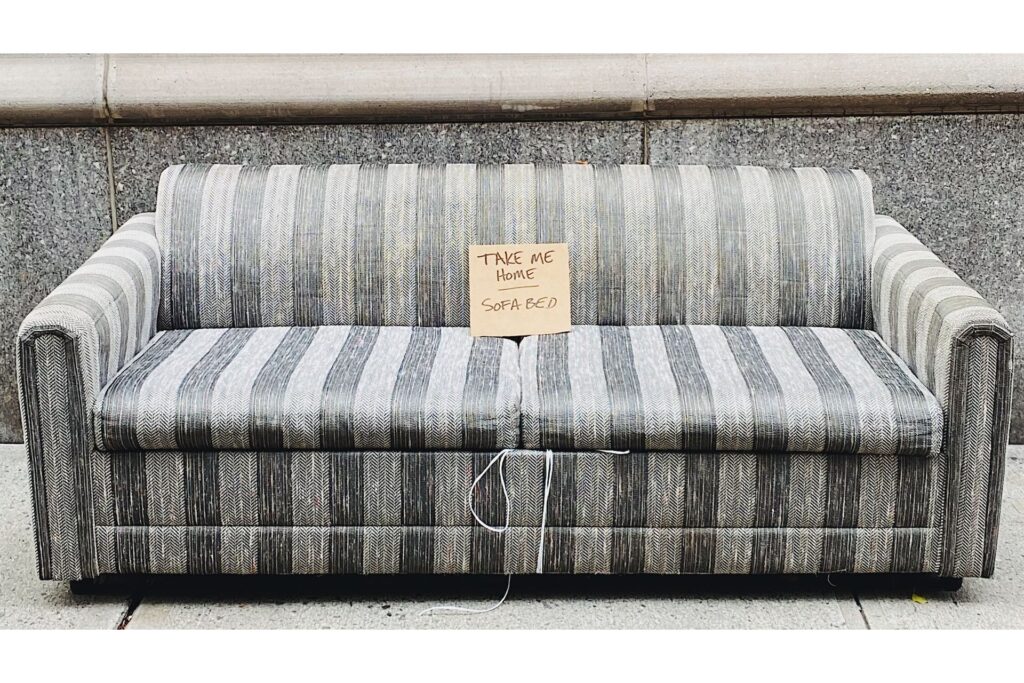
We are reader-supported. When you buy through links on our site, we may earn an affiliate commission.
Transformable furniture is a revolutionary concept in interior design. This type of furniture can adapt to multiple uses or to occupy less space when not in use.
For individuals living solo, especially in urban environments where living spaces are often compact, transformable furniture is incredibly relevant. It maximizes limited space, offering the flexibility to adapt a single room for various purposes — working from home, entertaining guests or relaxing.
The Rise of Solo Living and Small-Space Challenges
The trend of solo living in urban areas has increased in recent years. In 2020, only an individual occupied 27.6% of American households, valuing independence and personal space. This shift is particularly noticeable in cities, where career opportunities, lifestyle choices and social dynamics often encourage this arrangement.
However, solo living in urban environments often comes with the challenge of limited space. In 2022, rentals only averaged 887 square feet, a 54-square-foot decrease since the last decade. City apartments and homes are smaller due to high housing costs and density.
Residents frequently need more storage space and help to accommodate different activities in a single room. Transformable furniture emerges as an ingenious solution to these challenges.
This versatility is imperative in tiny urban homes, where every square foot counts. By integrating transformable furniture, solo dwellers can enjoy a flexible, adaptable living environment that meets their changing needs and lifestyles.
What is Transformable Furniture
Transformable furniture serves multiple purposes or changes shape to fit different needs. This category includes furniture that you can easily adjust, expand, fold or transform in some way to serve more than one function.
Examples of transformable furniture are abundant and innovative:
- Sofa beds: A classic example, you can use these as a sofa during the day and transform them into a bed at night.
- Extendable tables: These start as compact pieces, but you can extend them to accommodate more guests.
- Murphy beds: You can fold wall beds when not in use, freeing up floor space.
- Modular shelving: Units you can reconfigure to fit different spaces or storage needs.
- Convertible desks: These can serve as small dining tables or workspaces, depending on the need. As 45% of employees work remotely, this flexibility offers numerous benefits.
Benefits of Transformable Furniture in Solo Homes
Here are ways multi-functional furniture can revolutionize the living experience for solo dwellers, bringing functionality and style together in a seamless blend.
Cost-Effectiveness
Multi-functional pieces serve more than one purpose, eliminating the need to purchase multiple separate items. Still, experts forecast the folding furniture market to hit 4.7 million in 2027. It proves how transformable items can be a smart financial move for individuals looking to furnish their homes on a budget.
For example, investing in a sofa bed means you’re essentially getting two pieces of furniture for the price of one. Similarly, a sleeper chair that can double as a bed provides two functionalities while saving the expense of buying an additional piece.
Aesthetic Appeal
These pieces often come in modern aesthetics, blending functionality with stylish, sleek designs. It makes them practical additions to a home and essential elements in defining its visual appeal.
Designers of transformable furniture have mastered the art of combining utility with elegance. The result is furniture that is not only multi-functional but also visually striking. For instance, a wall bed can have chic shelving or a hidden desk, making it a stylish focal point when not in use as a bed.
Flexibility and Adaptability
Multipurpose furniture can adapt to various needs and spaces, offering a level of customization that traditional furniture often lacks. This adaptability makes it a perfect fit for the dynamic lifestyle of solo dwellers.
For instance, you can rearrange or expand a modular shelving unit to accommodate a growing book collection or new decorative items. Whether adapting to a work-from-home setup, making room for hobbies or simply changing the layout for a fresh look, transformable furniture allows this flexibility without needing constant new purchases.
Choosing the Right Transformable Furniture for Your Home
Selecting the right transformable furniture for your space, lifestyle and design preferences involves careful consideration of several factors:
Space Constraints
Measure your space meticulously before purchasing. Consider the size of the furniture in its primary form and dimensions when extended or transformed. Ensure enough room to move around comfortably when the item is in use.
Lifestyle Needs
Reflect on your daily activities. Do you work from home and need a multi-functional desk? Do you often have guests and need a sofa bed? Choose furniture that aligns with your lifestyle and daily routines.
Design Aesthetics
Look for pieces that complement your existing decor. Transformable furniture comes in various styles, from modern minimalist to more traditional designs. Select pieces that blend seamlessly with your home’s aesthetic.
Durability
Given its multi-functional nature, transformable furniture should be sturdy and well-constructed. Look for high-quality materials and a solid build. Check hinges, expandable parts and foldable sections to ensure they operate smoothly and withstand regular use.
Material Quality
The materials can significantly impact the longevity and appearance of the furniture. Opt for durable and easy-to-clean materials, like stainless steel or high-quality plastics and fabrics. Hardwood is also an excellent choice for heavy-use products like vanities or workbenches.
Maintenance
Consider the required care to keep the furniture in good condition. Pieces with complex mechanisms may need more maintenance. Choose furniture that’s easy to clean and maintain, especially if you have a busy lifestyle.
Impact of Transformable Furniture on Sustainability
Transformable furniture significantly contributes to sustainable living practices by reducing environmental impact in several ways.
- Reduced resource consumption: Fewer resources are required to produce this type of furniture.
- Longevity and durability: Designers develop many multi-functional pieces with durability in mind as they undergo more wear and tear due to their transforming mechanisms.
- Space efficiency: In urban environments, where space is premium, transformable furniture can make small living spaces more livable without necessitating larger homes.
- Reduced transportation emissions: Because transformable furniture can fulfill multiple roles, it reduces the number of items manufacturers must transport to retailers and consumers.
- Promotion of minimalist lifestyles: The adaptability and functionality of multi-functional furniture align well with minimalist living, which encourages less consumption and a small ecological footprint.
- Recycling and upcycling potential: Transformable furniture offers tremendous potential for recycling and upcycling at the end of its life cycle.
Embracing the Future of Flexible Living
Whether looking to maximize space, adhere to a budget or infuse modern style and flexibility into your living quarters, transformable furniture offers a solution that aligns with diverse needs and lifestyles.
So, explore the world of transformable furniture and see how it can revolutionize your space and how you live and interact with your home. Embrace the future of flexible living, and let your home be a testament to innovation and intelligent design.










